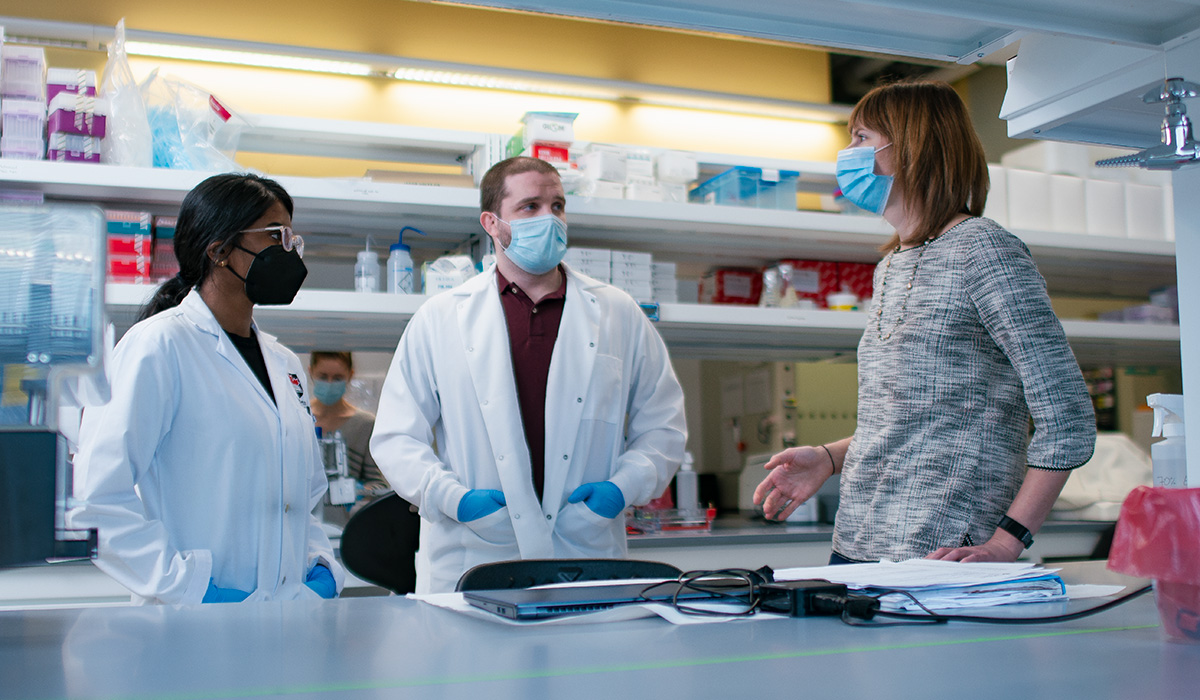Right now, nearly one in three Canadians—11 million people—are living with diabetes or prediabetes, and the numbers are on the rise. Diabetes is a major cause of blindness, kidney failure, heart attacks and stroke, and health experts aren’t sure why incidence has been increasing so dramatically. Diabetes is a chronic condition that prevents the body from producing the insulin it needs to regulate the amount of sugar in the bloodstream or prevents the body from using the insulin it makes effectively. Rates of both type 1 diabetes (an autoimmune reaction that causes the body to attack insulin-producing cells) and type 2 diabetes (which accounts for about 90 per cent of all cases and can be triggered by poor diet and a sedentary lifestyle) are growing.
Genetic risk factors play a role but don’t account for this alarming trend on their own, according to Carleton University biology researcher Jenny Bruin, who believes that exposure to environmental contaminants is an important culprit.

To address this challenge, Bruin is investigating which contaminants are behind the increase in both types of diabetes. And she is also part of a major project that’s developing insulin-secreting beta cells in a lab that can be transplanted into the body to treat type 1 diabetes and perhaps one day stop the disease.
“We have to understand what’s causing diabetes in order to address the underlying problem,” says Bruin, who shifted from toxicology to diabetes research during a postdoctoral fellowship. “That’s when I learned how prevalent this disease is and how much it impacts people’s daily lives. You can never turn it off.”
Understanding the Impact of Environmental Contaminants
Bruin and her team of Carleton students are zeroing in on contaminants that take a long time to break down in the environment and similarly have a long lifespan within the human body because they accumulate in our fat.

They’re doing experiments with chemicals used in flame retardants as well as PFAS chemicals that can be found in clothing, cookware and furniture. Pesticides and chemicals used in agriculture are also on their radar.
“We know from the epidemiology literature that people who have higher levels of pollutants in their blood also have higher rates of diabetes,” says Bruin.
“We’re starting to generate evidence to show that there is probably a causal relationship.”
By exposing beta cells in a Petri dish to various contaminants, one can study how their ability to secrete insulin and other molecular pathways are affected. This allows Bruin to measure—in a controlled setting, using both animal and human cells—what “dose” of each chemical has an impact, as well as explore the interplay between contaminants and other variables such as sex and high-fat diets.
“One of our goals is to provide the best possible data to regulatory agencies,” she says. “Certain chemicals might be causing or contributing to diabetes incidence, so we’re assessing which concentrations could be harmful. There is enormous value to some of the chemicals we use, but we need to understand their broader health impacts.”
Developing Insulin-Producing Cells in the Lab
For the stem-cell project, which is supported by a five-year, $3-million grant from the Canadian Institutes of Health Research (CIHR) and JDRF Canada, Bruin and a team of researchers across the country are developing human beta cells in a dish.
These cells will primarily be for patients with type 1 diabetes—to replace beta cells that have been destroyed by their immune systems—but could also be used to treat type 2 diabetes.
“One strategy currently being tested in clinical trials is converting stem cells part way toward becoming beta cells,” Bruin explains.
“These cells can finish the final stages of their development after transplant and become insulin-producing cells.”

Taking this process one step further, the CIHR/JDRF-funded team is also attempting to make fully functional cells in the lab, rather than allowing the final stages of development to occur in the patient, so they end up with cells that secrete insulin at the right times and in the right amount. This would eliminate the risk of cells that work perfectly in a controlled environment not functioning as expected in the body when they’re exposed to variables such as contaminants, diet, medication and lifestyle.
“Another aspect of this project,” she adds, “is potentially engineering the stem cells to be resistant to some of those post-transplant environmental exposures.
“The fact that these cells are being tested now in a clinical setting gives me a lot of hope and optimism,” says Bruin.
“Talking to patients with diabetes, especially families of young kids with diabetes, has had a tremendous impact on me. That’s what drives me every day.”